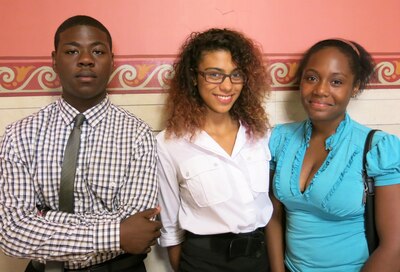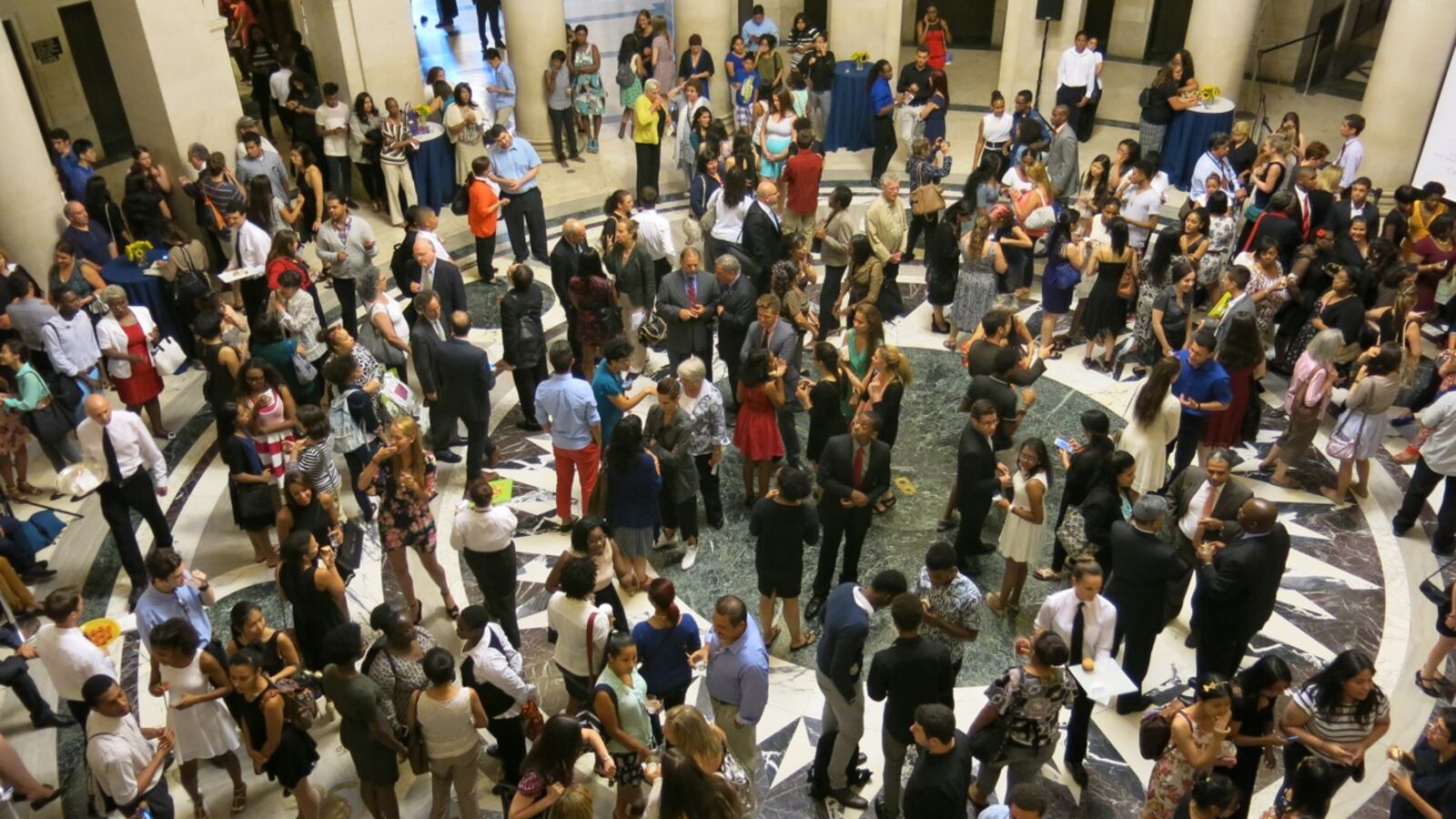Ritz Padilla wanted her daughter to be a teacher. So when AnJuli was applying to high school, Ritz steered her toward Hillcrest High School, a neighborhood school in Queens divided into nine career-focused tracks.
AnJuli didn’t last long in the teaching track. Soon after school started, she tried out for the school play and got hooked on theater.
“It takes a lot of courage to stand on stage and actually perform in front of people,” she said during a reception honoring about 1,250 recipients of the Chancellor’s Arts Endorsed diploma, held at the New York Supreme Courthouse on Wednesday.
Schools Chancellor Carmen Fariña, speaking at the event, drew attention the city’s efforts to give more students access to arts education, which Mayor Bill de Blasio committed new money to in his first city budget.
To qualify for the diploma, first offered in 2009, students must choose an area of focus–drama, dance, visual arts, or music–complete 10 classes in that area, and take a Regents-style exam designed by art teachers and professional artists.
Of the city’s 500-plus high schools, only about 30 had students graduate with an arts endorsed diploma this past year, according to a spokesman for the Department of Education. Though that number is just a small fraction of city schools, it’s double the number represented in the first year of the program.

AnJuli was lucky: while the quality and breadth of the arts program wasn’t her primary criteria when selecting a high school, her school’s theater track was strong enough that she easily completed the 10 semesters required for the arts endorsed diploma.
Many students don’t have the option, because their schools don’t offer that many courses in one area of the arts, or don’t have any arts programming at all, as Comptroller Scott Stringer noted in a report released in April. Though state law requires that all middle and high schools have some form of arts education, one in five city schools do not have a full-time, certified arts teacher, and schools in the poorest areas of the city were least likely to offer arts classes, according to Stringer’s analysis.
The number of schools with those programs could increase next year, once the city adds the 100 new arts teachers made possible by increased funding for the arts. Mayor Bill de Blasio’s first budget includes $23 million in additional funding, bringing the city’s total arts budget up to $353 million.
Manhattan Borough President Gail Brewer, who has called for better evaluation of the city’s existing arts programs, said that students in small, non-arts focused high schools are likely to face the most barriers to securing an arts-focused diploma.
“That’s where we have problems,” she said.
Speaking to this year’s recipients of the arts-endorsed diploma, Chancellor Fariña said that many of the schools that will receive funding to hire new arts teachers have already been notified.
The need for more arts education hits close to home, Fariña said. Participating in a student-run musical competition, called SING, had a powerful effect on her nephew, who she said wasn’t a big fan of school when he started at Edward R. Murrow high school in Brooklyn.
“Arts turned my nephew around as a student as a person. There’s nothing about the arts that are a frill,” she said.
AnJuli’s former classmate, Regis Laraque, described his reasons for studying theater in equally passionate terms.
“A great philosopher once said, YOLO,” he said. You only live once.

